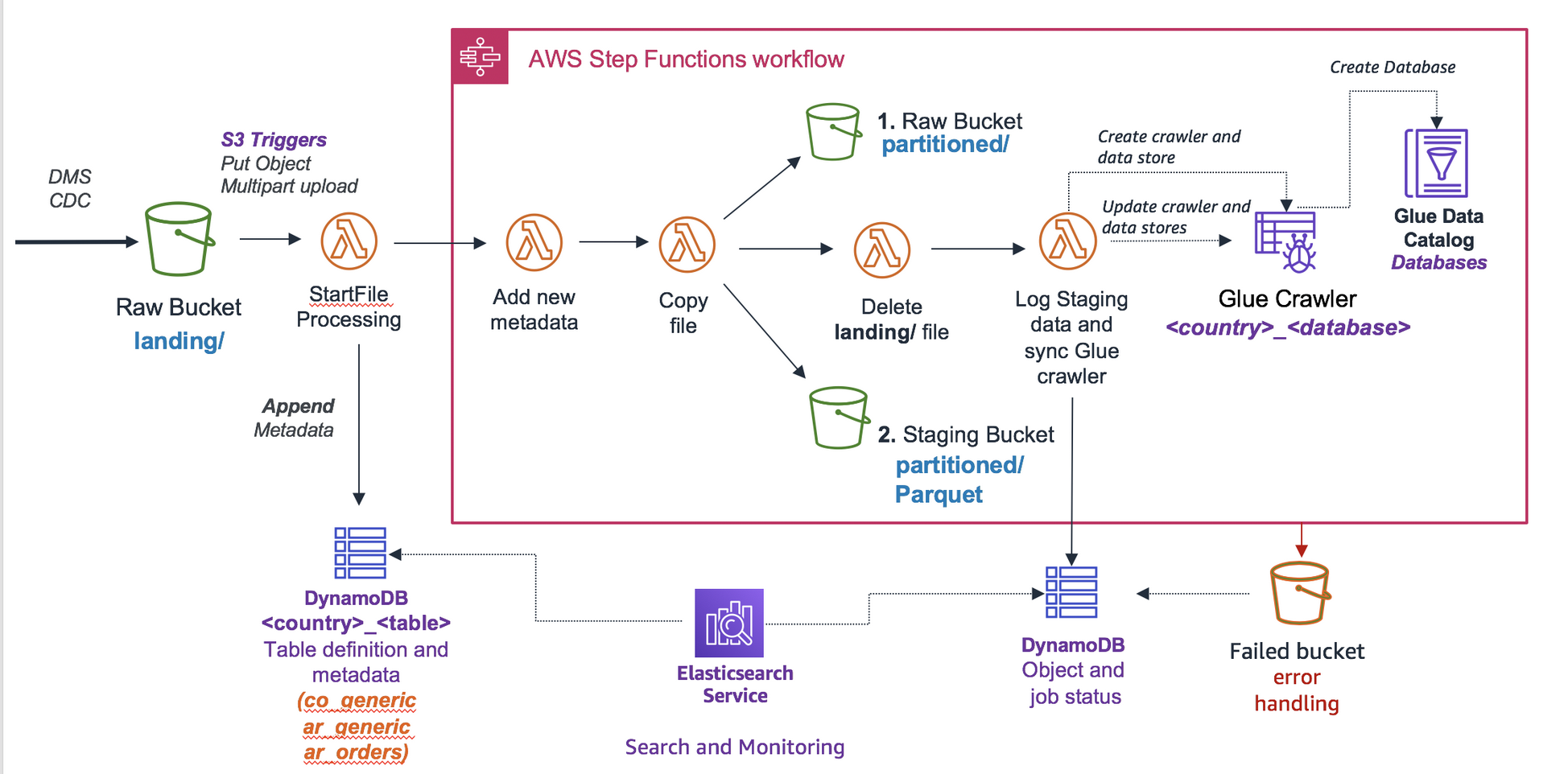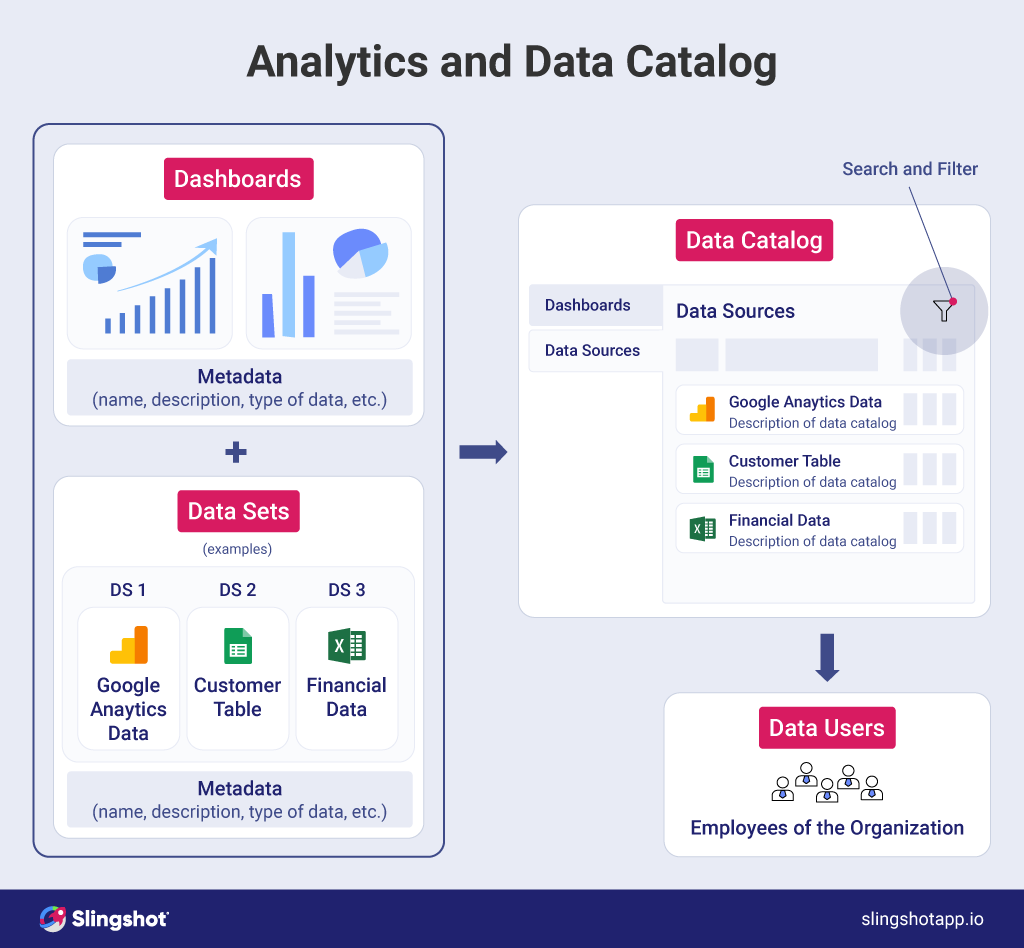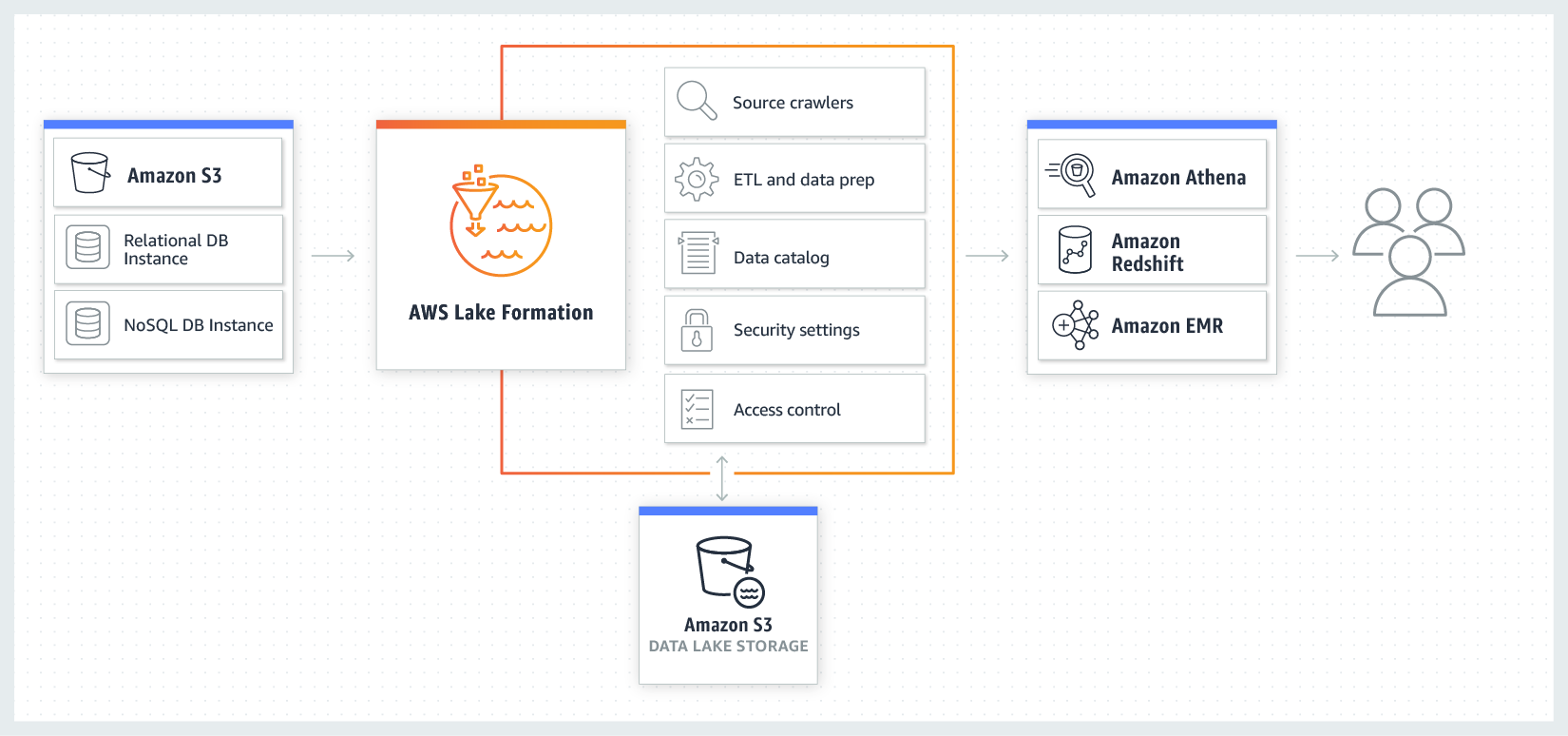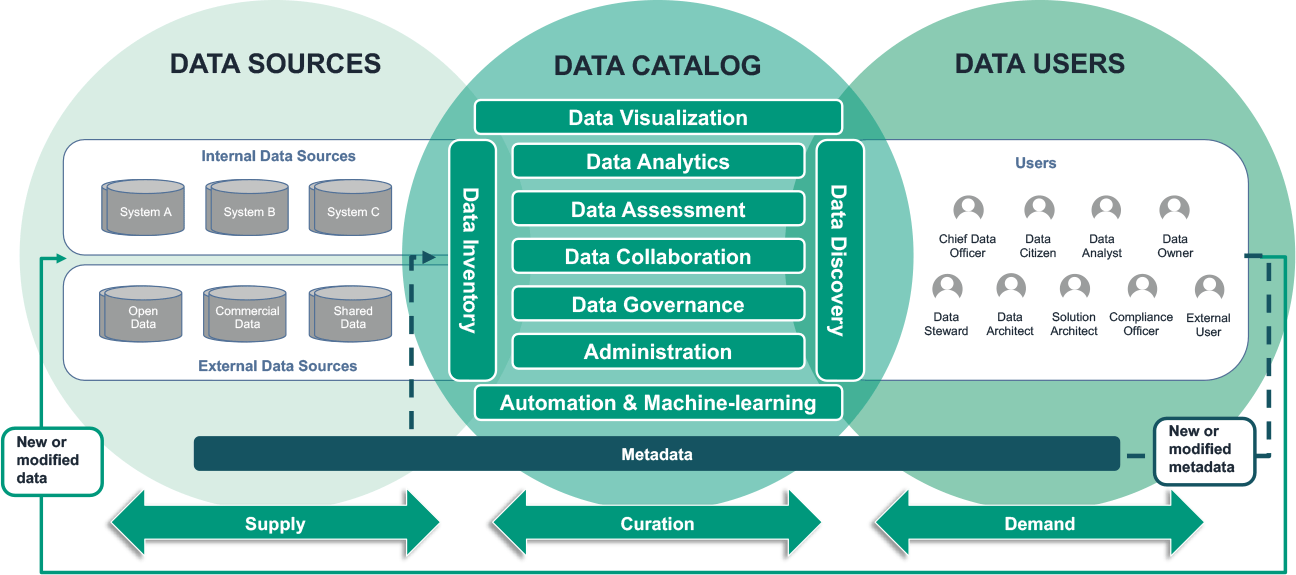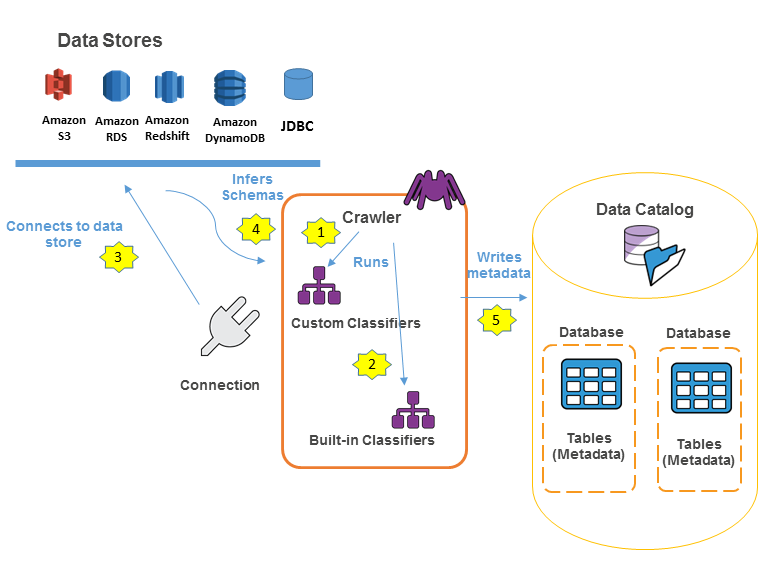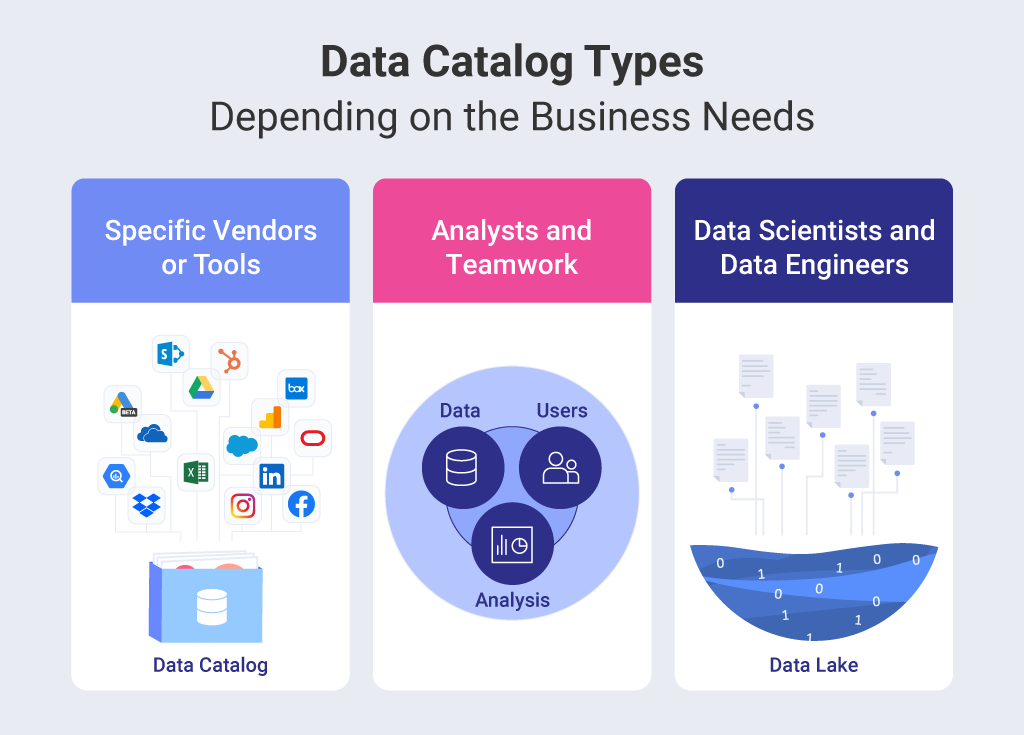Data Lake Metadata Catalog
Data Lake Metadata Catalog - From 700+ sources directly into google’s cloud storage in their. Make data catalog seamless by integrating with. The centralized catalog stores and manages the shared data. R2 data catalog is a managed apache iceberg ↗ data catalog built directly into your r2 bucket. Examples include the collibra data. The onelake catalog is a centralized platform that allows users to discover, explore, and manage their data assets across the organization. Lake formation centralizes data governance, secures data lakes, and shares data across accounts. In this post, you will create and edit your first data lake using the lake formation. Data catalog is also apache hive metastore compatible that. Automatically discovers, catalogs, and organizes data across s3. Modern data catalogs even support active metadata which is essential to keep a catalog refreshed. By capturing relevant metadata, a data catalog enables users to understand and trust the data they are working with. They record information about the source, format, structure, and content of the data, as. The metadata repository serves as a centralized platform, such as a data catalog or metadata lake, for storing and or ganizing metadata. A data catalog plays a crucial role in data management by facilitating. A data catalog is a centralized inventory that helps you organize, manage, and search metadata about your data assets. A data catalog serves as a comprehensive inventory of the data assets stored within the data lake. Internally, an iceberg table is a collection of data files (typically stored in columnar formats like parquet or orc) and metadata files (typically stored in json or avro) that. Any data lake design should incorporate a metadata storage strategy to enable. It uses metadata and data catalogs to make data more searchable and structured, helping teams discover and use the right data faster. Any data lake design should incorporate a metadata storage strategy to enable. Lake formation centralizes data governance, secures data lakes, and shares data across accounts. Ashish kumar and jorge villamariona take us through data lakes and data catalogs: By capturing relevant metadata, a data catalog enables users to understand and trust the data they are working with. From 700+ sources. A data catalog serves as a comprehensive inventory of the data assets stored within the data lake. A data catalog contains information about all assets that have been ingested into or curated in the s3 data lake. Modern data catalogs even support active metadata which is essential to keep a catalog refreshed. Make data catalog seamless by integrating with. In. Automatically discovers, catalogs, and organizes data across s3. Ashish kumar and jorge villamariona take us through data lakes and data catalogs: Simplifies setting up, securing, and managing the data lake. A data catalog is a centralized inventory that helps you organize, manage, and search metadata about your data assets. Data catalogs help connect metadata across data lakes, data siloes, etc. It uses metadata and data catalogs to make data more searchable and structured, helping teams discover and use the right data faster. Better collaboration using improved metadata curation, search, and discovery for data lakes with oracle cloud infrastructure data catalog’s new release; Internally, an iceberg table is a collection of data files (typically stored in columnar formats like parquet or. It provides users with a detailed understanding of the available datasets,. The centralized catalog stores and manages the shared data. Look to create a truly end to end data market place with a combination of specialized and enterprise data catalog. Make data catalog seamless by integrating with. A data catalog plays a crucial role in data management by facilitating. By ensuring seamless integration with existing systems, data lake metadata management can streamline metadata workflows, promote data reuse, and foster a more. It provides users with a detailed understanding of the available datasets,. Modern data catalogs even support active metadata which is essential to keep a catalog refreshed. In this post, you will create and edit your first data lake. It uses metadata and data catalogs to make data more searchable and structured, helping teams discover and use the right data faster. A data catalog contains information about all assets that have been ingested into or curated in the s3 data lake. Automatically discovers, catalogs, and organizes data across s3. It provides users with a detailed understanding of the available. Examples include the collibra data. Ashish kumar and jorge villamariona take us through data lakes and data catalogs: Make data catalog seamless by integrating with. The centralized catalog stores and manages the shared data. The following diagram shows how the centralized catalog connects data producers and data consumers in the data lake. A data catalog serves as a comprehensive inventory of the data assets stored within the data lake. On the other hand, a data lake is a storage. Modern data catalogs even support active metadata which is essential to keep a catalog refreshed. Look to create a truly end to end data market place with a combination of specialized and enterprise. Data catalog is a database that stores metadata in tables consisting of data schema, data location, and runtime metrics. Ashish kumar and jorge villamariona take us through data lakes and data catalogs: Data catalog is also apache hive metastore compatible that. Lake formation uses the data catalog to store and retrieve metadata about your data lake, such as table definitions,. Ashish kumar and jorge villamariona take us through data lakes and data catalogs: You will use the service to secure and ingest data into an s3 data lake, catalog the data, and. A data catalog is a centralized inventory that helps you organize, manage, and search metadata about your data assets. Examples include the collibra data. Automatically discovers, catalogs, and organizes data across s3. Modern data catalogs even support active metadata which is essential to keep a catalog refreshed. From 700+ sources directly into google’s cloud storage in their. Data catalogs help connect metadata across data lakes, data siloes, etc. The metadata repository serves as a centralized platform, such as a data catalog or metadata lake, for storing and or ganizing metadata. By capturing relevant metadata, a data catalog enables users to understand and trust the data they are working with. It uses metadata and data catalogs to make data more searchable and structured, helping teams discover and use the right data faster. The centralized catalog stores and manages the shared data. A data catalog serves as a comprehensive inventory of the data assets stored within the data lake. Data catalog is a database that stores metadata in tables consisting of data schema, data location, and runtime metrics. It provides users with a detailed understanding of the available datasets,. On the other hand, a data lake is a storage.Building a Metadata Catalog for your Data Lakes using Amazon Elastics…
GitHub andresmaopal/datalakestagingengine S3 eventbased engine
The Role of Metadata and Metadata Lake For a Successful Data
Data Catalog Vs Data Lake Catalog Library
S3 Data Lake Building Data Lakes on AWS & 4 Tips for Success
3 Reasons Why You Need a Data Catalog for Data Warehouse
Extract metadata from AWS Glue Data Catalog with Amazon Athena
Mastering Metadata Data Catalogs in Data Warehousing with DataHub
Data Catalog Vs Data Lake Catalog Library vrogue.co
Data Catalog Vs Data Lake Catalog Library
A Data Catalog Plays A Crucial Role In Data Management By Facilitating.
R2 Data Catalog Is A Managed Apache Iceberg ↗ Data Catalog Built Directly Into Your R2 Bucket.
In This Post, You Will Create And Edit Your First Data Lake Using The Lake Formation.
By Ensuring Seamless Integration With Existing Systems, Data Lake Metadata Management Can Streamline Metadata Workflows, Promote Data Reuse, And Foster A More.
Related Post:

